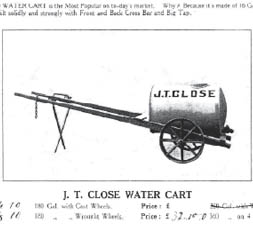 |
 |
|
Settling dryland
In years of good rainfall the Southern Riverina offered plentiful pastures and opportunities for the graziers who were settling the land in the latter part of the 1800s. The region was prime sheep and wool country, with the many creeks and streams providing good water supplies for stock. “Being proud of his flock or herd, the
settler gives it every attention. Then come
the periods of low rainfall, and the
animals are starved by the ravages of
drought. Drastic losses by death mean
economic failures; the settler is unable to
meet his liabilities, and in consequence,
finds himself in difficulties for several seasons
until better times place him in a more
favourable position.” Regular droughts led individual landowners to begin experimenting with irrigation, using steam driven pumps and weirs on larger rivers and creeks. Violent conflict with downstream neighbours often followed; some resorted to explosives to remove weirs and release water which had been held up. As early as the 1870s landholders began lobbying the NSW Government for water conservation dams and irrigation systems. The drought from 1895 to 1902 was particularly severe and decimated many pastoral enterprises. But at the same time the States had joined the Federation of the nation, from 1901. For landholders in the Southern Riverina this seemed to offer some promise that an agreement on the use of the Murray River’s waters for irrigation would soon follow. |
Household Water
On rural properties landholders were usually well prepared for drought with windmills and large underground rainwater tanks. However many town residents found themselves relying on water supplies carted in from elsewhere. During several years of drought in the early 1900s Finley residents were dependent on the Tocumwal water train. Carts like the one pictured above were used to carry water from the train to people’s homes. Water was then transferred from the cart – bucket by bucket – into household rainwater tanks. The Finley engineering firm JT Close was among those producing a popular range of water carts. JF Furphy & Sons, based in Shepparton, was another well known manufacturer. Photo: State Water Archives Collection. |
|
| sitemap • credits
& references • copyright • local
history links • contact & contribute • VISITORS |
||

